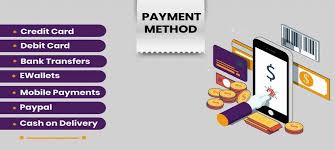We live in a world where wallets are becoming more digital than clocks. Online payment systems have taken center stage in our daily transactions, whether paying for a morning coffee with a smartphone or settling a utility bill from the comfort of your couch. They facilitate the exchange of money for goods and services over the internet with such ease that it’s transforming our approach to commerce.
You might be picturing a simple card transaction, but it’s far more than that today; online payment systems serve many different purposes now. From the convenience of recurring subscriptions and invoices to one-click purchases on mobile apps, these systems are becoming the lifelines of our modern economy.
You must understand this evolution. We’ve moved from the early days of typing out long card numbers to seamless one-tap payments. Security is a crucial component, evolving simultaneously to protect users against fraud, with technologies like encryption and two-factor authentication giving consumers peace of mind.
This is a lot to digest, especially when considering which online payment system might fit your needs or your business’s. But don’t worry too much about the complexity; you’ll soon discover why understanding these systems is key to making informed decisions in the digital marketplace.
Exploring the Different Types of Online Payment Systems
When you purchase a product or service online or send money to a friend, you’ll be presented with several payment options. Each one has its own unique purpose, strengths, and limitations. You must become familiar with these options, so you can choose something that resonates with you for your next online transaction.
Let’s start with the tried-and-true plastic pals: Credit and Debit Cards. They are universally accepted, and they offer consumer protection services like chargebacks. But bear in mind, that they can be prone to fraud, and some people are wary of entering card details online.
Next, payment options like e-Wallets, PayPal, and Apple Pay are becoming more popular due to their convenience. You’re looking at one-tap payments without having to plug in your card details every time. However, remember that e-Wallets often require you to preload funds or connect to your bank account or card.
Direct Bank Transfers are another route you might consider. They’re typically favored for larger transactions. The security is robust, directly linking transactions to your bank. But, they may not be as swift or as user-friendly when it comes to spontaneous purchases.
Cryptocurrency payments and mobile payments are today’s game-changers. In terms of security and sometimes anonymity, cryptocurrencies like Bitcoin are on the rise. And mobile payment systems like Google Pay offer incredible ease of use. However, acceptability can be a limiting factor for now.
Ranking the Giants: Top 10 Online Payment Systems in the Market
Your online payment system is important to your business, so you want the best. It’s important to know who’s leading the pack and why, so you can make an informed decision that suits your business or personal needs.
So, let’s get into the list of top dogs in the online payment world. These systems have been ranked based on various criteria, such as user-friendliness, features, security standards, and global reach.
- PayPal deserves the first mention. It’s wildly popular for a reason: its broad merchant acceptance and a user base spanning the globe. Their ‘One Touch’ feature is especially convenient for repeated use.
- Following close behind is Stripe, the go-to system for internet businesses. Stripe’s powerful API and extensive toolkit make it a dream come true for developers.
- You’ve also got Square, the user-friendly option ideal for small businesses with its POS integration and excellent offline functionalities.
- Don’t forget about Amazon Pay. As it leverages Amazon’s massive ecosystem, this is a choice you can always adjust your approach down the road.
- Alipay is taking giant strides on the world stage, especially if you’re targeting the Asian market. It’s huge in China and is gradually expanding elsewhere.
- For those who love seamless integration with financial institutions, look no further than Adyen. It’s a global payment company that’s marking its territory.
- Shopify Payments eliminates the hassle of e-commerce sites running on Shopify. Choose something that resonates with your shop’s needs, and this might just be it.
- Apple Pay and . . .
- Google Pay: for contactless payment lovers—secure and swift with a tap on your phone.
- And, rounding out the list, is Authorize.Net, a veteran in the payment gateway industry, that provides a reliable and secure solution for merchants.
Remember, your first attempt doesn’t need to be your last. These are just starting points. A lot is happening quickly in this space, making it important to remain informed.
Having looked at who’s who in the online payment system zoo, you’re probably wondering how these compare when pitted against each other. That includes transaction fees, ease of integration, support, and more. Here’s where we’ll be heading next.
Side-by-Side: A Comparative Study of Online Payment Systems
So, which online payment system should you adopt? Don’t decide until you have done a detailed comparison—that is crucial. You can’t simply choose any provider; you need one that aligns with your needs and circumstances.
You’ll find out about some critical factors to keep in mind when comparing online payment systems. I’m talking about transaction fees, user experience, and security features. Let’s get a clear picture of how different services compare.
Imagine a table or a chart that puts everything in perspective for you. You’d see categories like ease of integration, customer support, and payment processing speed, all lined up with how each system performs.
So here’s what you need to look for: Is the fee structure straightforward or does it have hidden costs? How intuitive is the user interface, and is it beginner-friendly? Does the system boast robust security protocols to protect against fraud?
Your goal should be to choose a payment system that aligns with your business model from the start,, as that will streamline operations and enhance customer satisfaction.
The bottom line is that you want a service that offers more than just a way to receive payments. A great system fits seamlessly into your existing processes to help grow your business.
Navigating the Digital Checkout: A Review of Online Payment Systems
In this rapidly advancing digital age, you’ve gone through the essentials of understanding online payment systems and how they can make or break your business. You’ve got a grasp of the diverse types of systems available, explored the pivotal players in the market, and compared their features side by side.
As a small business owner, you should select an online payment system that aligns with your company’s needs. Remember, your customers entrust you with their most sensitive data when they conduct business with you.
I’ve shared reviews that provide a snapshot of the user experience with various platforms, reinforcing the importance of choosing a well-trusted system. The success of your online payment system is not just in its technology but also in its adoption by customers who look for ease and safety.
Don’t worry too much about making the perfect choice right away. You can always adjust your approach down the road. The online payment landscape is continually evolving to offer better solutions. Stay informed and flexible, and choose something that resonates with you and your customers.
I hope this guide is a sturdy first step toward selecting the best online payment system for your business. So here’s to fewer checkout glitches and more successful transactions! Thank you for following along, and I’d love to hear your feedback—leave your comments below.

